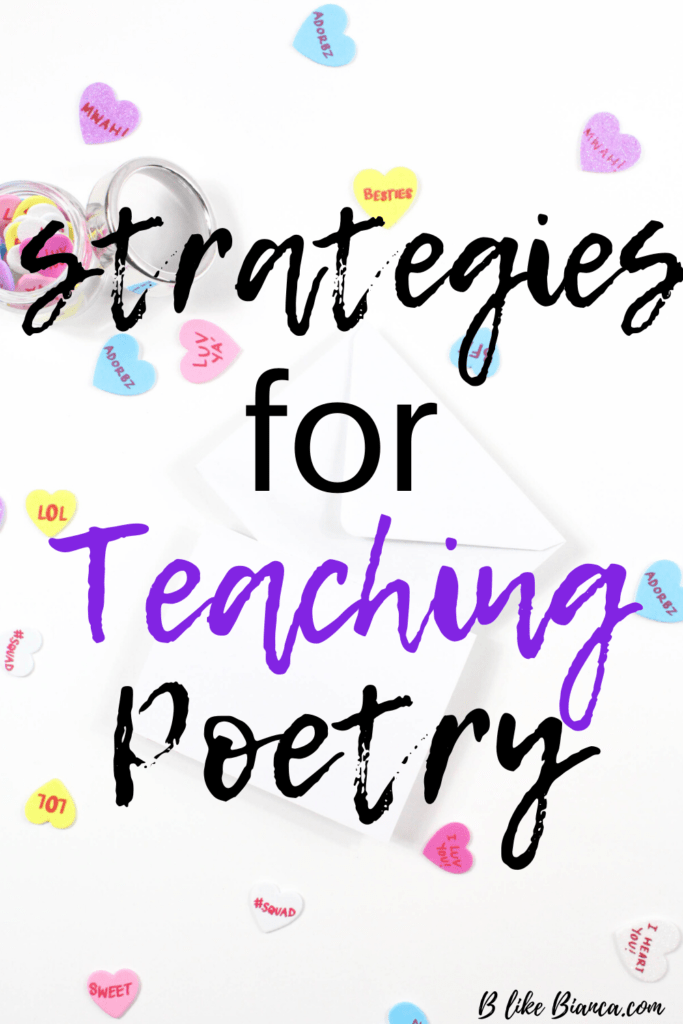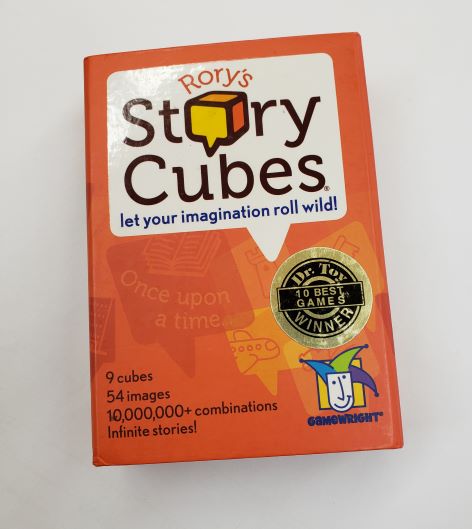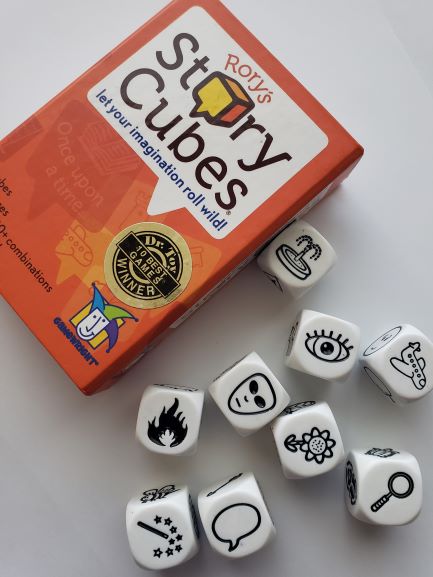April is national poetry month. During this month, I always start my big poetry unit right after spring break. I know teaching poetry can be difficult but this works well. I actually call teaching poetry a “soft” lesson before state testing in May. And when I say, “soft” I mean it is super fun and engaging but still brings a lot of rigor!
When a lot of students look at poetry, they automatically think of rhyming words…and Dr. Seuss. But I wanted them to approach different ways of learning poetry with reading and analyzing various types of what is or what is not poetry. to begin I had to teach poetry a little differently. This is how I start out.
Strategies for Teaching Poetry

Story Cubes
To begin with, before I even introduce poetry, I start with creative writing. The creative writing approach is little bit different, my main goal for my students is to structure their own poem by the end of the Poetry unit itself. The best way I found for students to get comfortable writing is just for it to be completed creatively, unstructured, and at times for it to make no sense what’s so ever.
The way I get my students to loosen up with creative writing is with Story Cubes. Story Cubes is a creative story generator. It has 9 cubes that have pictures of everything from a book to an airplane, to a pyramid and a question mark. You roll the dice and then create a story based off the pictures you see on the cubes.
As a class, we do one story together. I remind students they are free to write and input whatever is appropriate, and without any restraints. Students raise their hand and share what direction they want the story to go in. Other begin working on their own story. But I always start off with an example that we completed, then I give them a chance to work on their own. So, when I roll the dice again, the class knows what to expect and I put on a timer for them to begin working on their own creative story.
I set the timer for 10 minutes to start off, and I tell them I am going to work on a story too. This creates a lot of classroom accountability. Then the time goes off, I share my story. Then ask for volunteers. At that point, many hands will shoot off in the air and I give each one a chance to share their story. There are a lot of laughs, questions, and confusion because sometimes there will a sheep talking to an alien, or a fish doing magic!
With this exercise you will always get a ton of students voluntarily wanting to share their story, even those that wouldn’t normally have their hand up. The next day, they will be asking to creative writing again!
Vocabulary
After creative writing with Story Cubes, then I start the official poetry unit. I always begin with vocabulary:
- Haiku
- Limerick
- Sonnet
- Couplet
- Free Verse
- Stanza
- Meter
- Imagery
- Rhyme
As well as going over metaphors and similes.
I give an example of each vocabulary term by matching with a poem. At the end of this practice, I give students a kahoot game matching poem verses to their corresponding vocabulary word.
Music
Using music as poetry is an all time favorite! And to get started, I use something they are very familiar with…movies!
Yes, two movies: The Lion King and Toy Story
I pull the familiar songs from these movies, “Circle of Life” by Elton John and “You’ve got a Friend in Me” by Randy Newman and print the lyrics. I have the students watch the music video as well. This very engaged lesson plan is one I found years back from scholastic.com. Here is the full poetry lesson plan.
Once I’ve gotten my students feet with two familiar songs. I add in a poetry book that has some very deep meanings. I use Tupac’s, The Rose that Grew From Concrete book of poems. This will work very well with an older group of students (7th grade and up) in terms of analysis. I read them a brief biography of Tupac’s life and use that as a basis of analysis of his poems.
The Rose That Grew From Concrete by Tupac Shakur
Did you hear about the rose that grew
from a crack in the concrete?
Proving nature's law is wrong it
learned to walk with out having feet.
Funny it seems, but by keeping its dreams,
it learned to breathe fresh air.
Long live the rose that grew from concrete
when no one else ever cared.
I have my students follow the reading process:
1. Read the title- ask a question, make a connection, make a prediction
2. Scan the text for author’s word choice clues
3. Reread the text with a lens to determine the author’s purpose
4. Annotate while reading – connect repeated words, phrases, ideas,
5. Summarize text– adding in central idea key details, evidence, and reasoning.
Once students have gotten their feet wet by analyzing a poetry. I give students the opportunity to try it out on their own. I have students pick out a school appropriate song that is meaningful to them. They will send me the info and I print out the lyrics for them to analyze, annotate, and look for patterns.
Since students are choosing their own song, they are highly engaged and I give the opportunity to listen to it. There will be a couple of students that will not have a song picked so have a couple of songs on standby they can choose from. They will pick out their favorite stanza and discuss why
After students complete their analysis, I have them pick out their favorite stanza. I then give them a note card to write the title of song, who it’s by, copy the stanza and explain why they chose those lines out of any other in the song, and if time, decorate.
They will then publish their note cards all over the classroom bulletin boards.
Final Thoughts
If you was an older group of students (8th grade and up) something that really got them thinking was: Shakespeare vs Hip Hop.
These is where they take Shakespeare lines and lines from Hip Hop verses and have students choose which lines are from William Shakespeare or Hip-Hop songs. Click below to find out more!
Poetry was always one of my favorite parts of Language Arts. There are so many forms of poetry, it left so much to interpretation. What one poem means to someone else can have a different perspective by another.
Please comment below if you have any more poetry engagement ideas! Or pair this learning chart to see if your students are understanding poetry!



Love this IDEA! As a first-year SPed teacher I am learning to find ways to get and keep students engaged. I sometimes feel as though I’m trying to be to perfect when simplicity actually works. I’m going to use this as a way to help them get comfortable with poetry.
Hi Christina!
Thank you for stopping by. I’m so happy that you are going to try this out. Let me know how it goes!